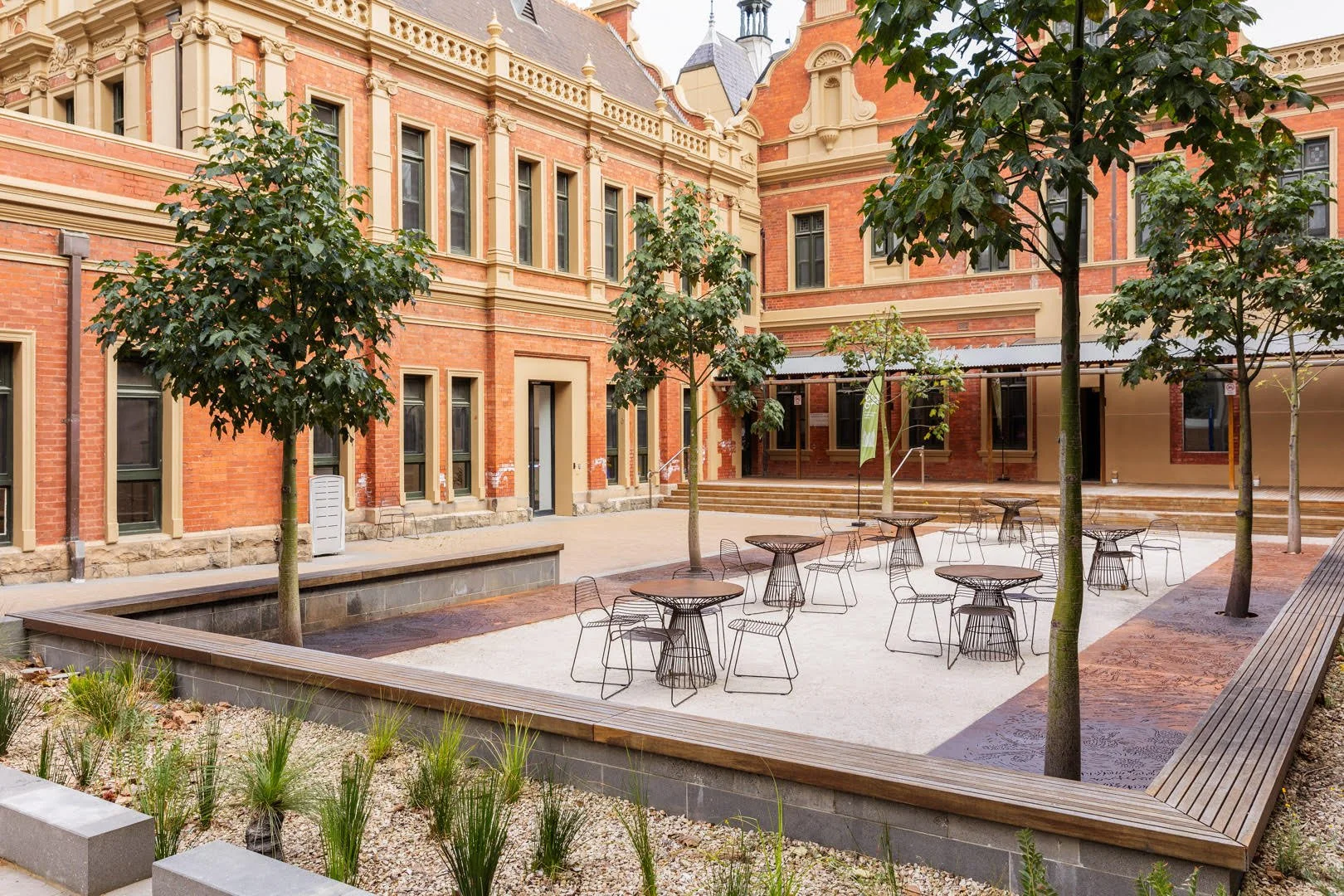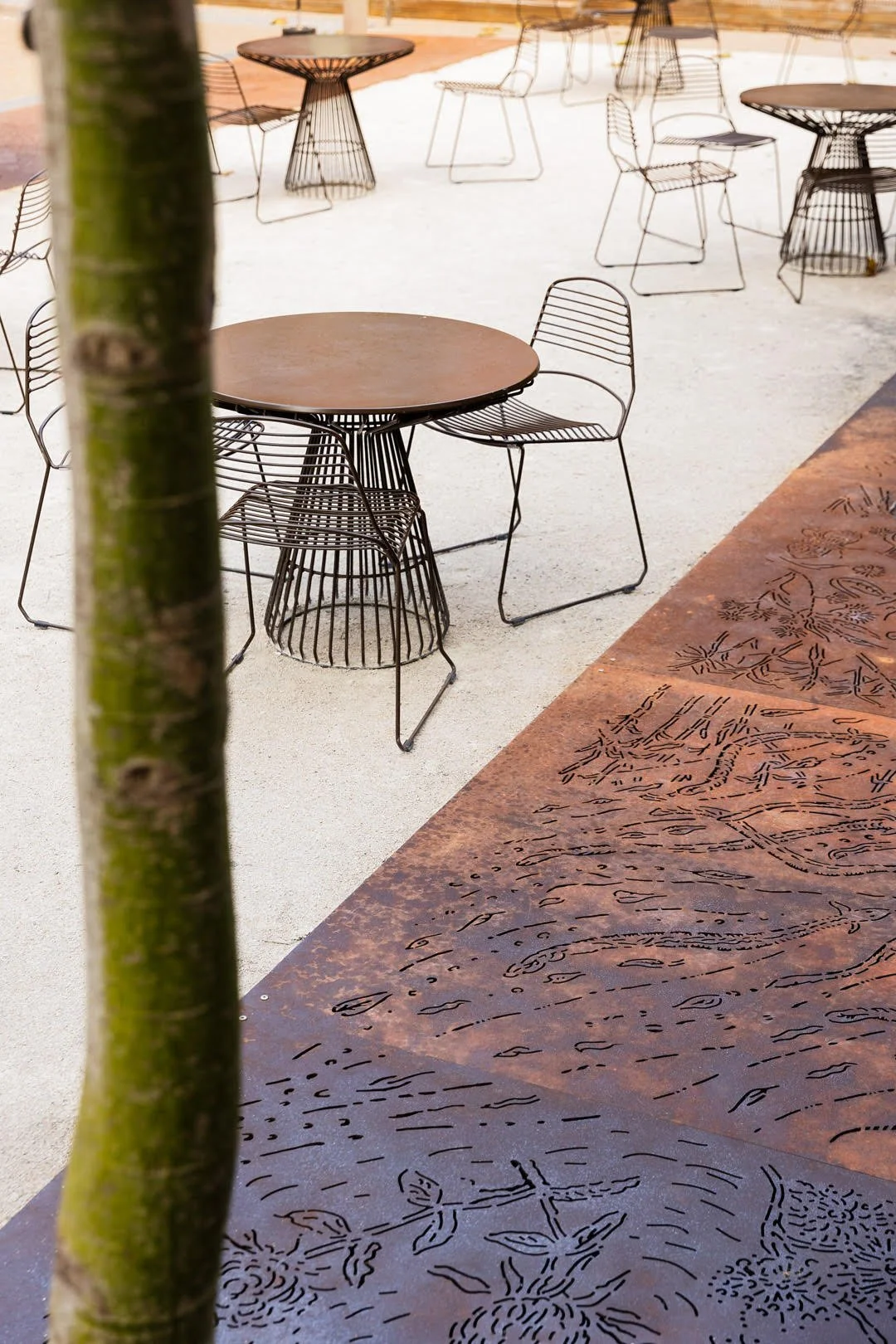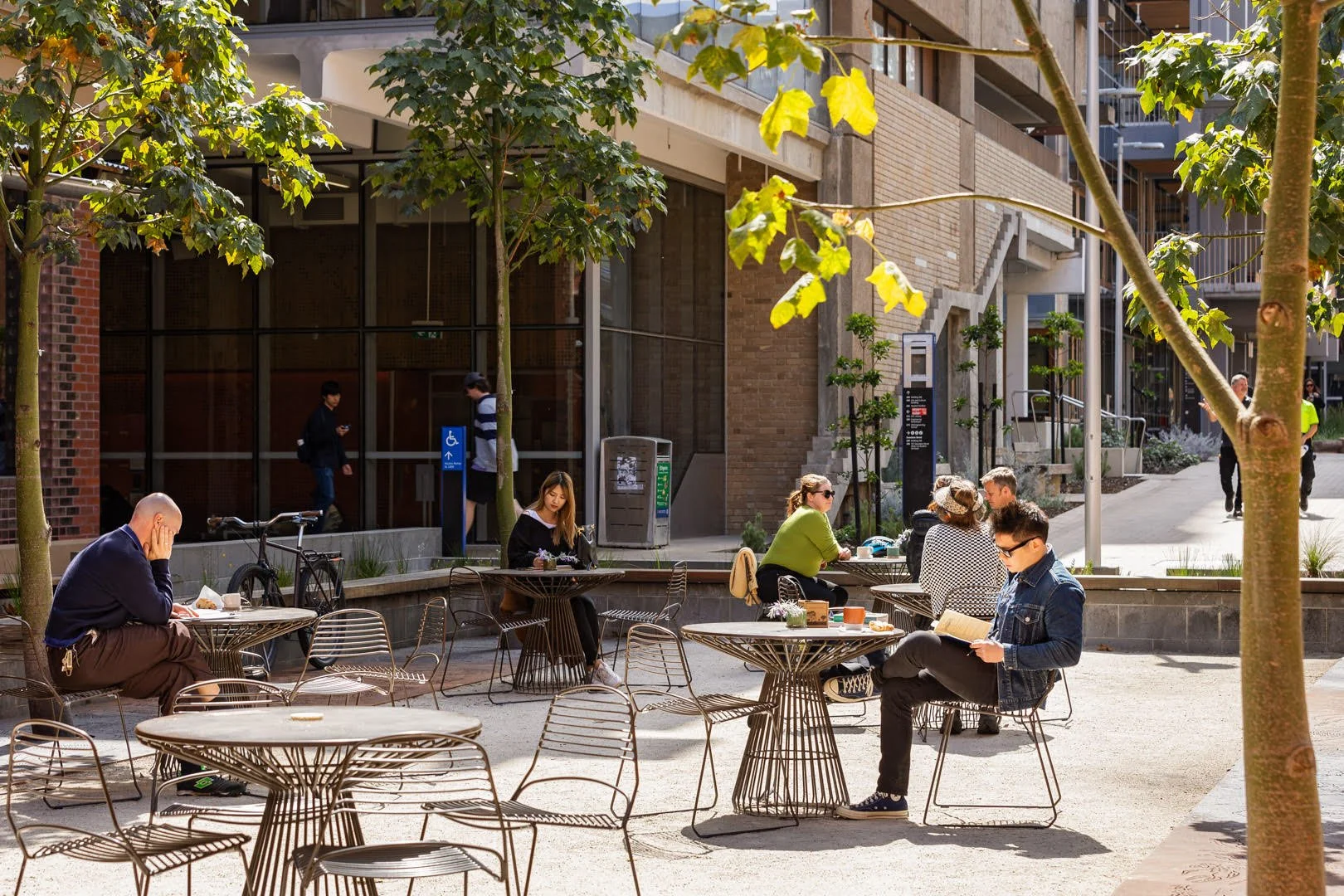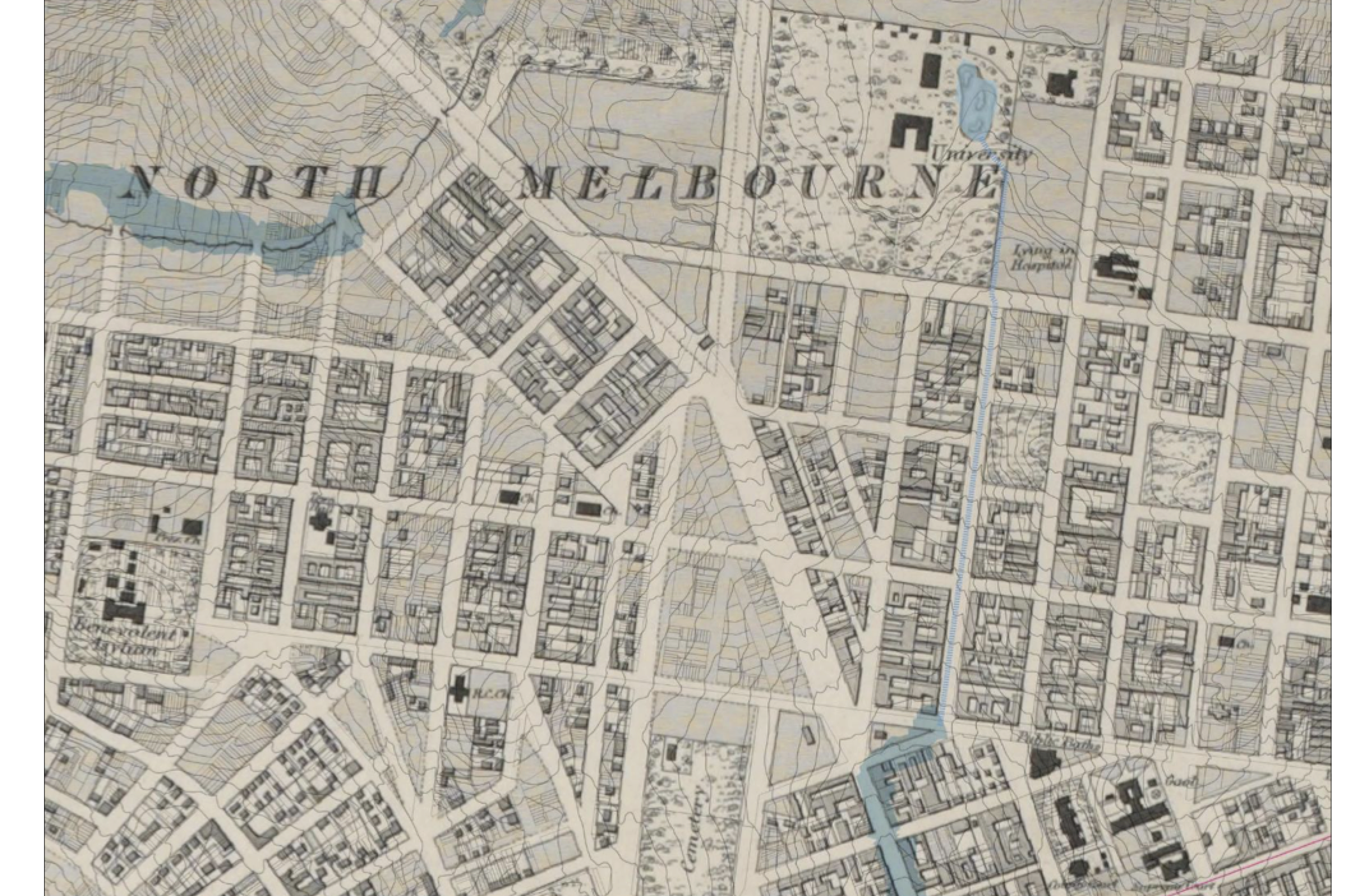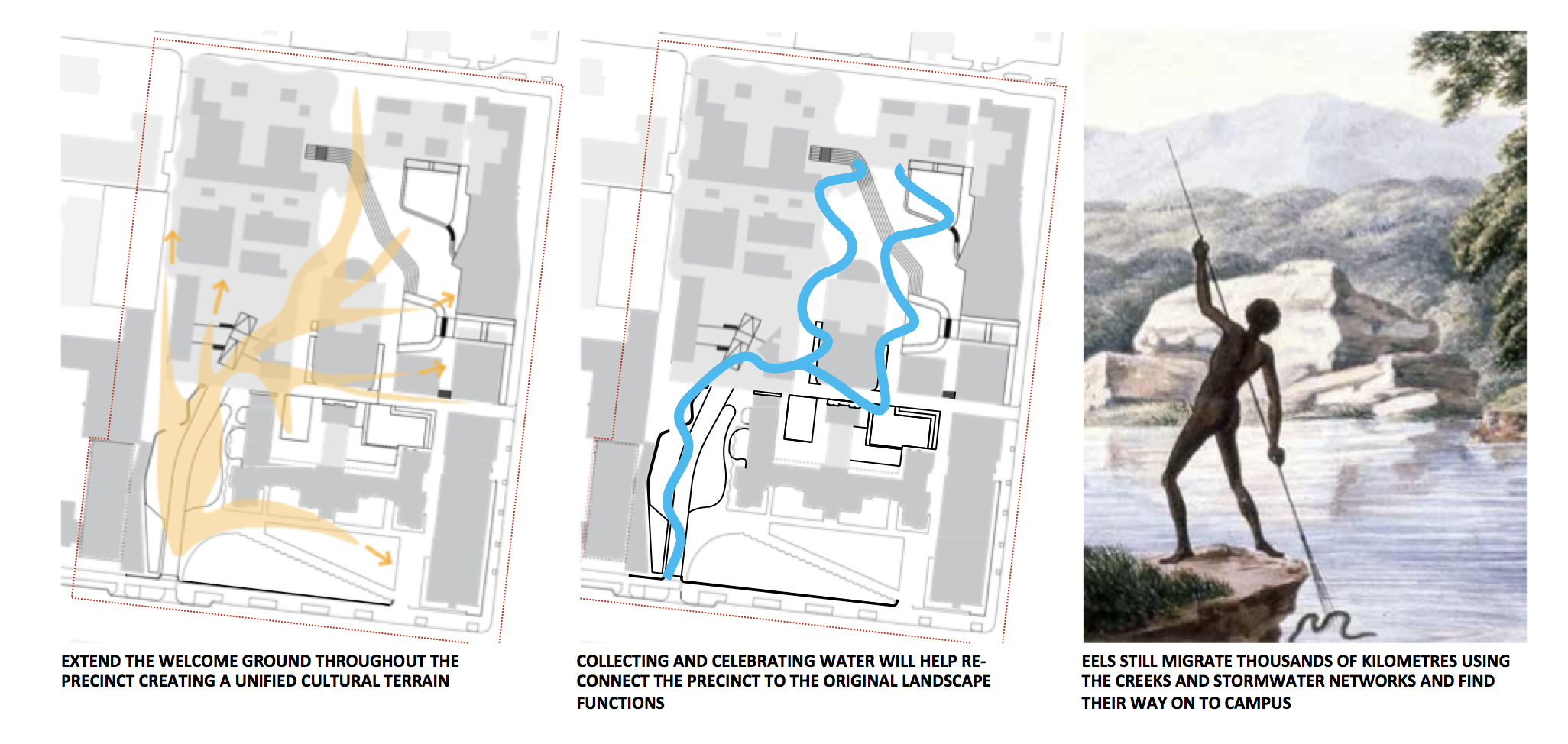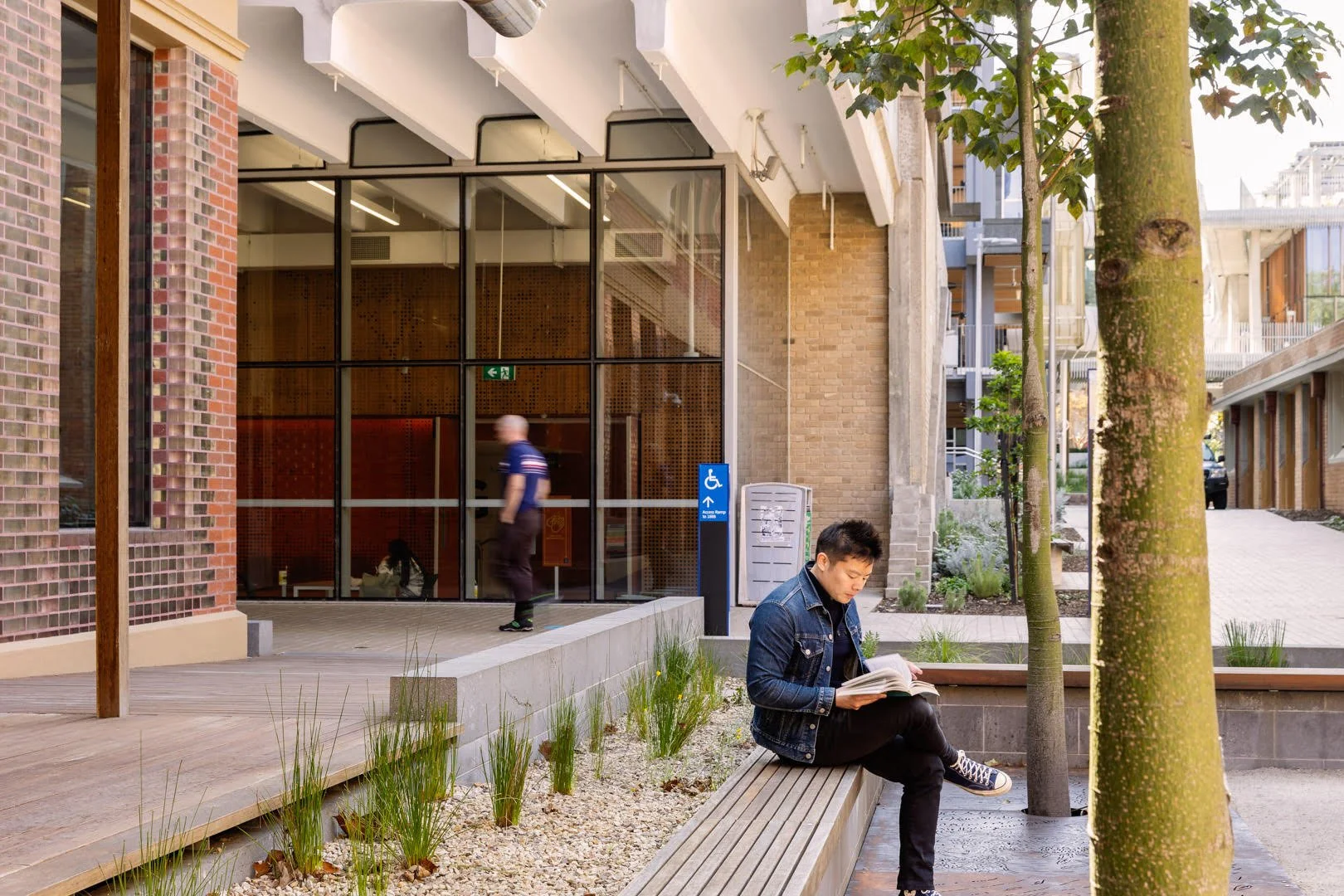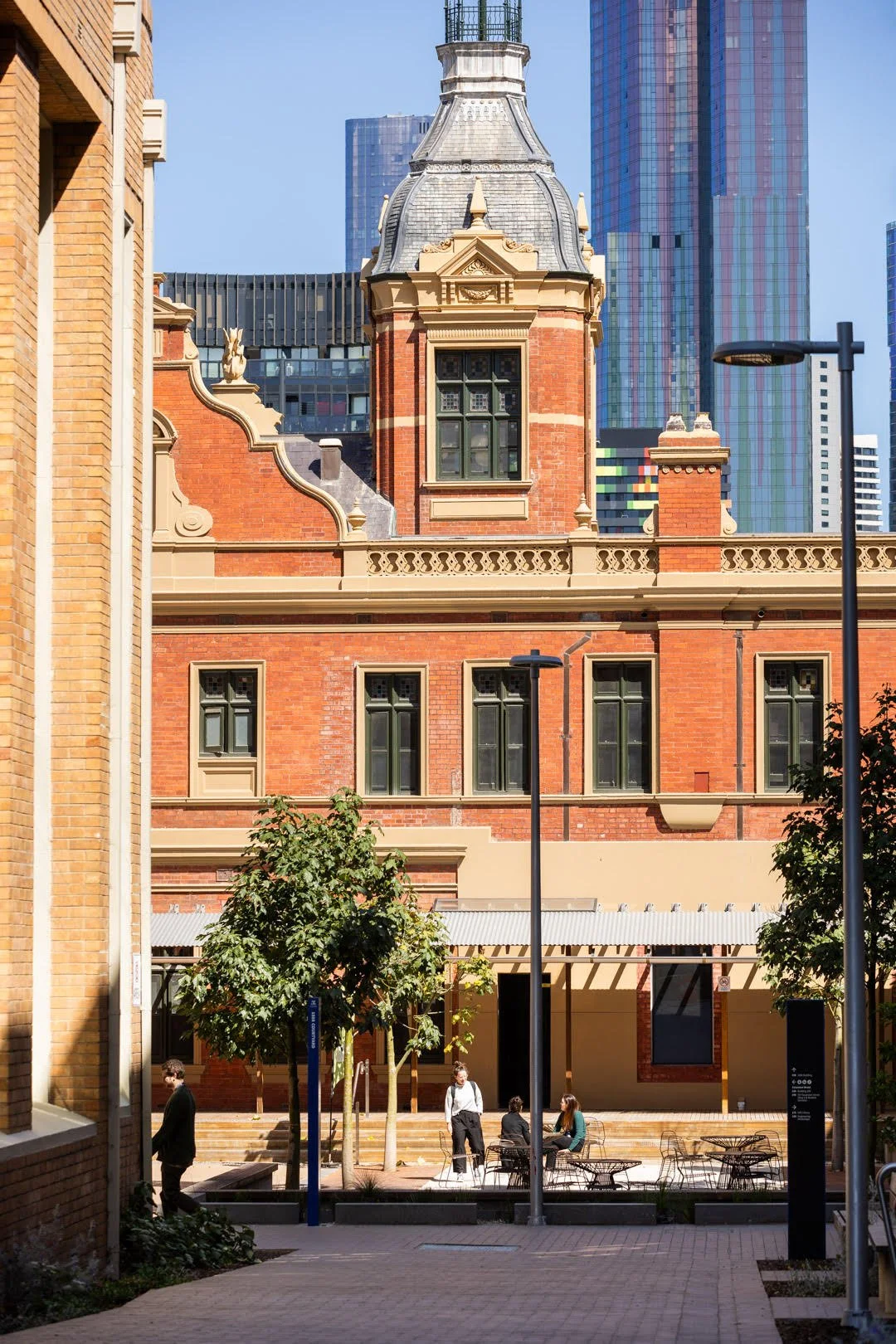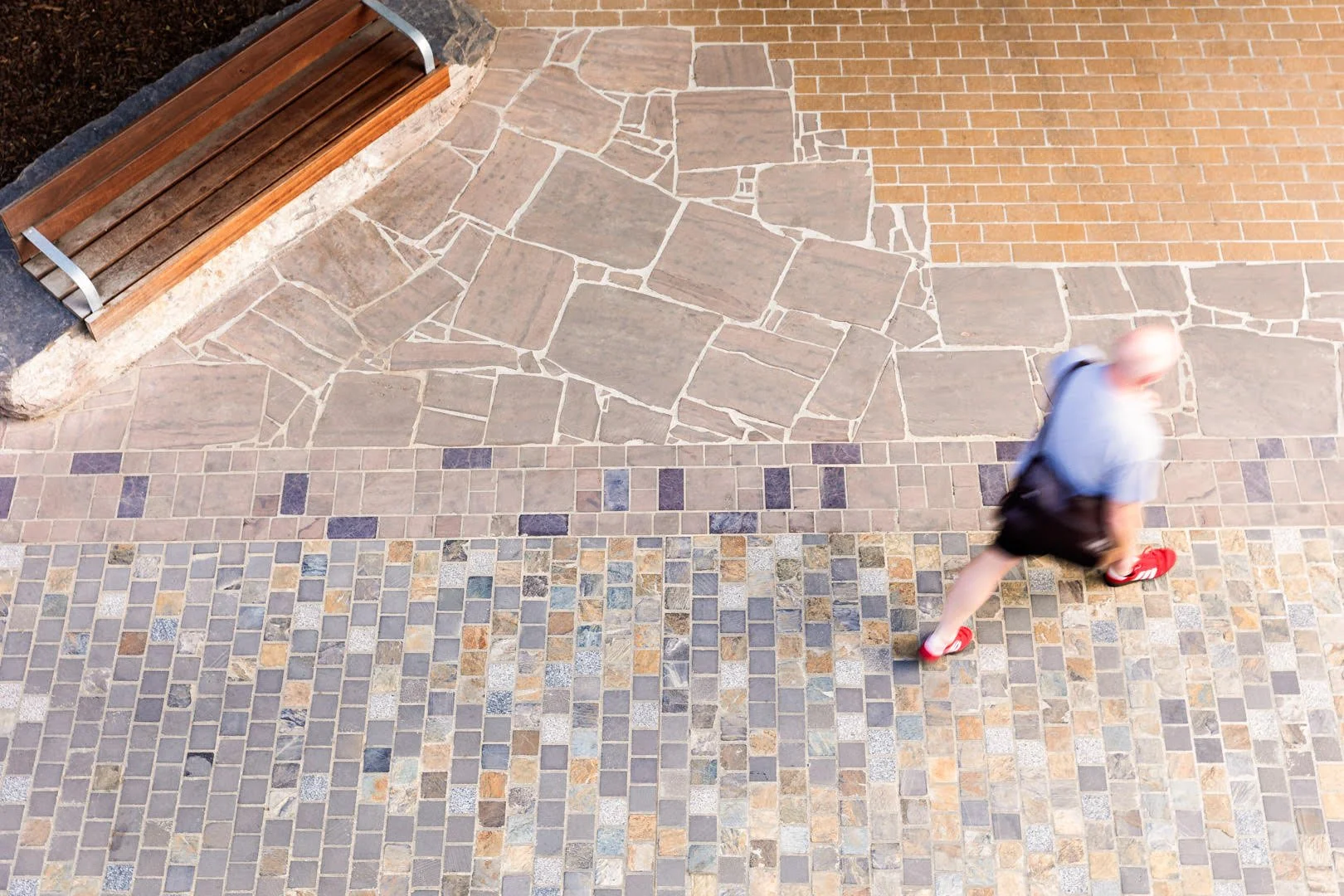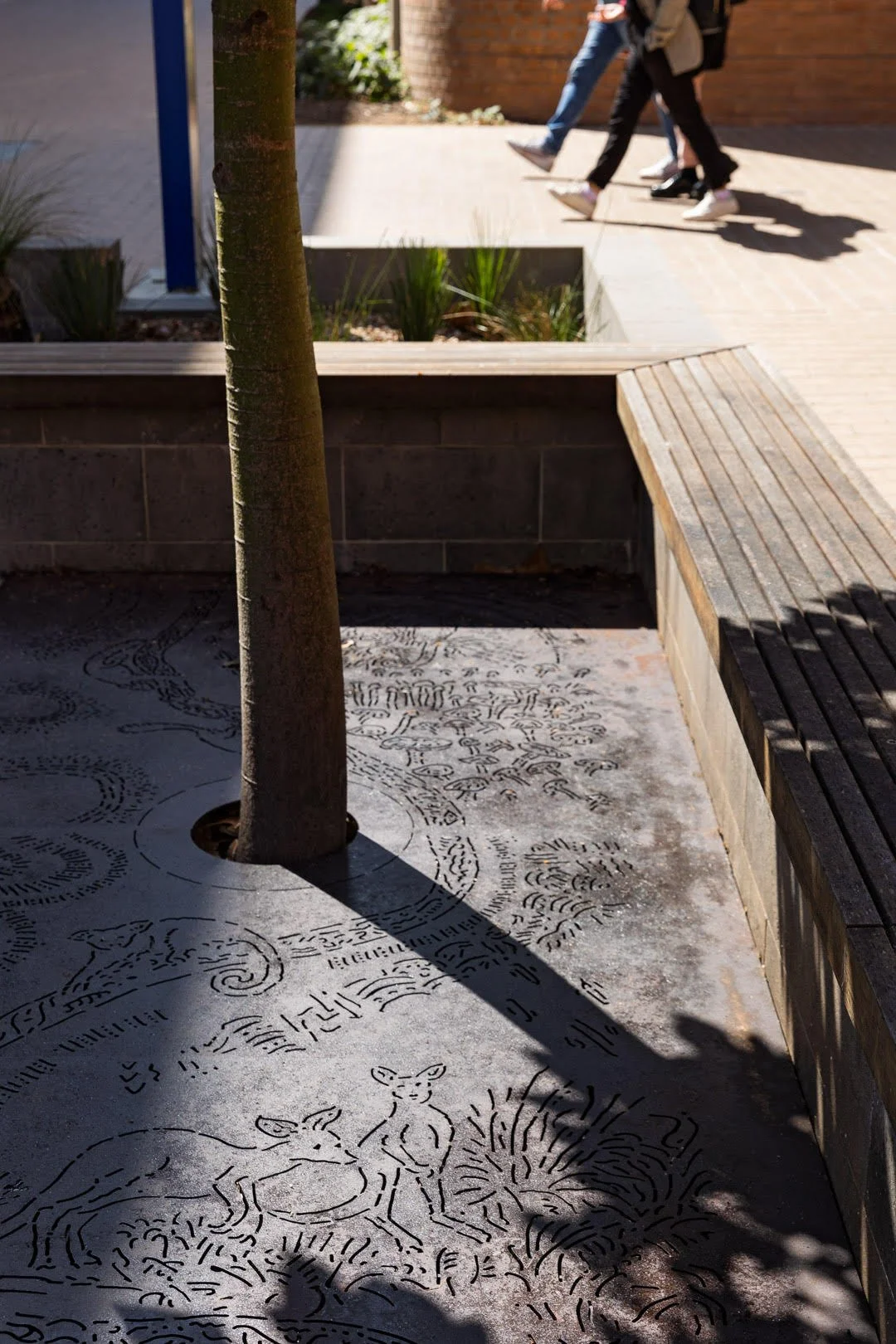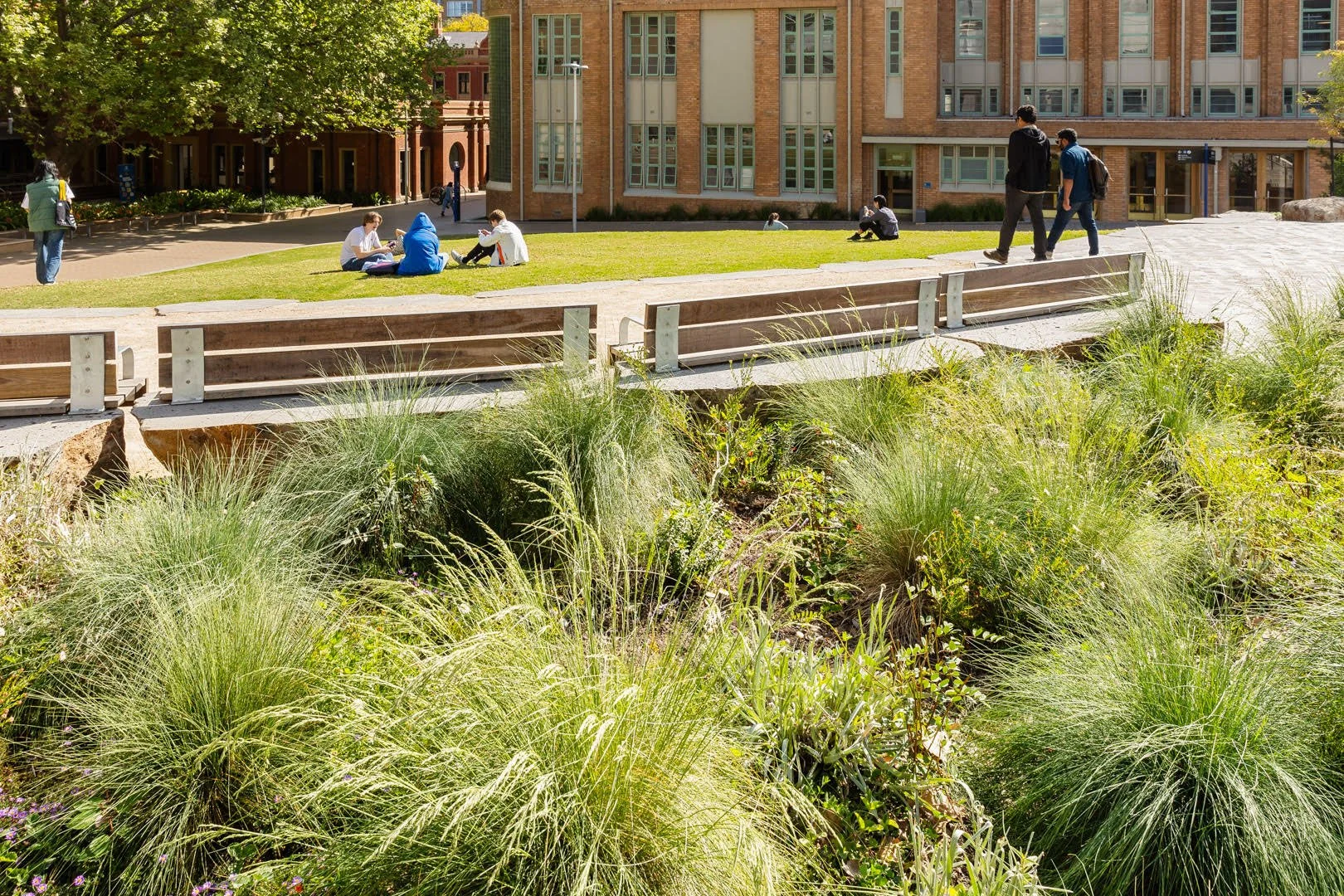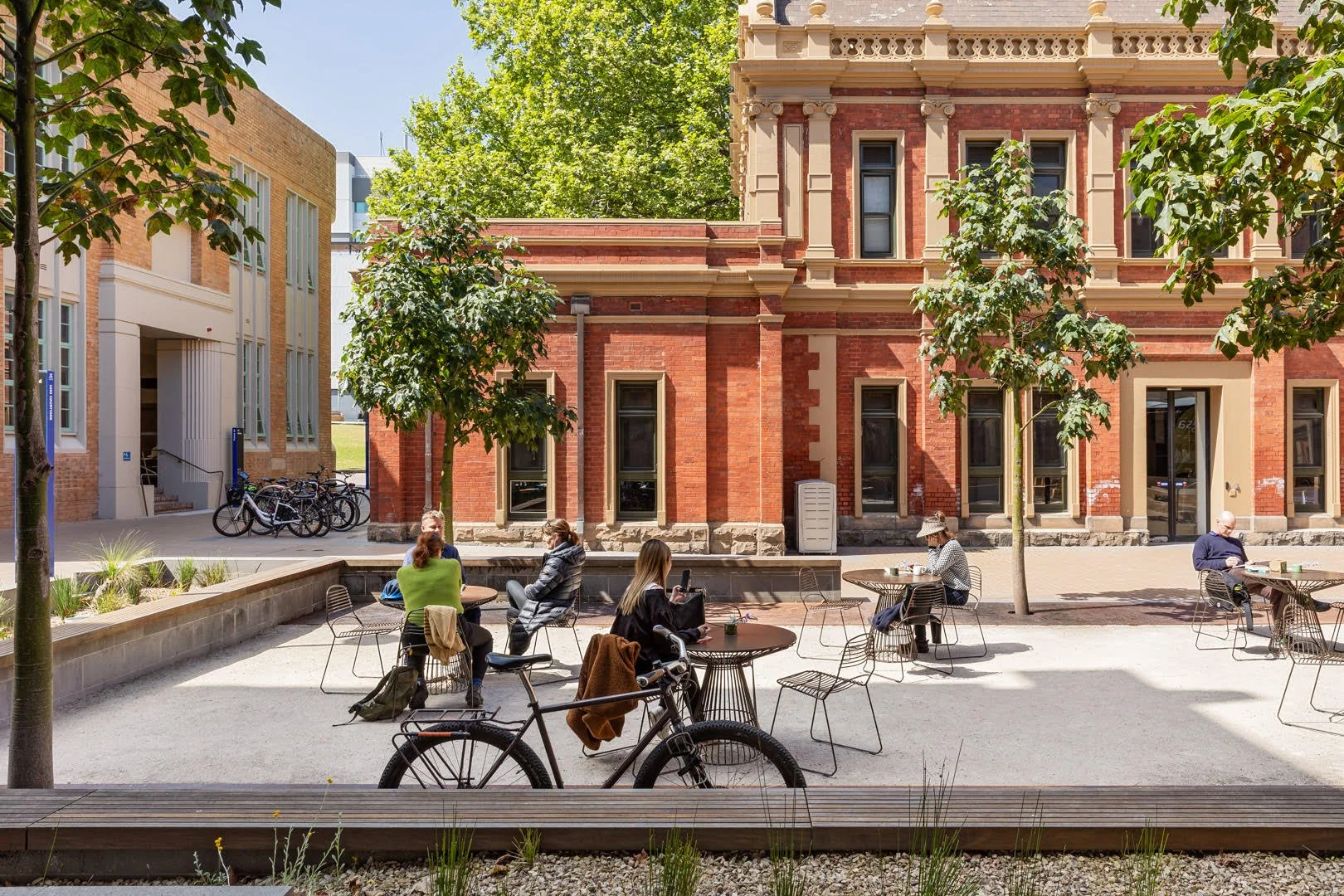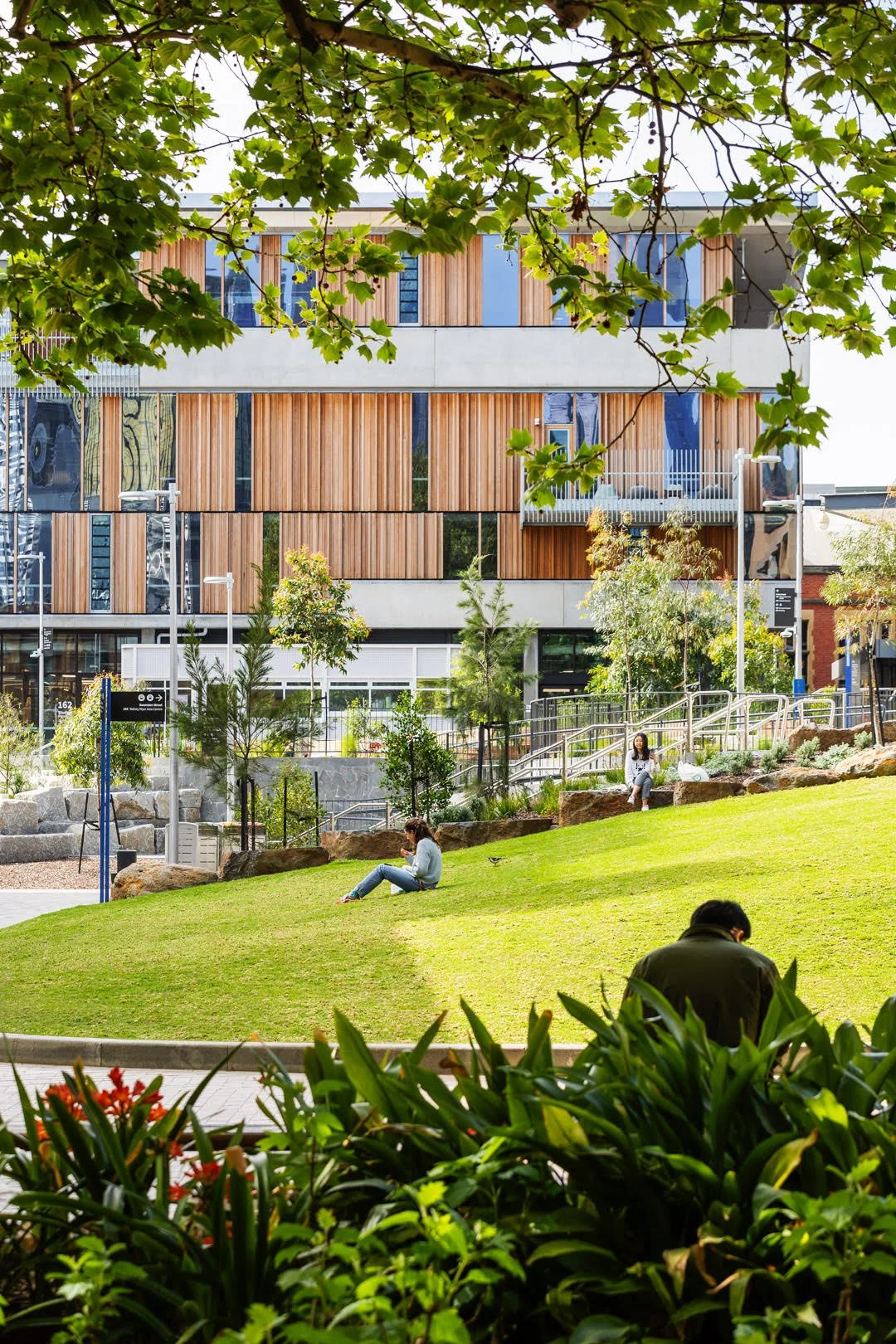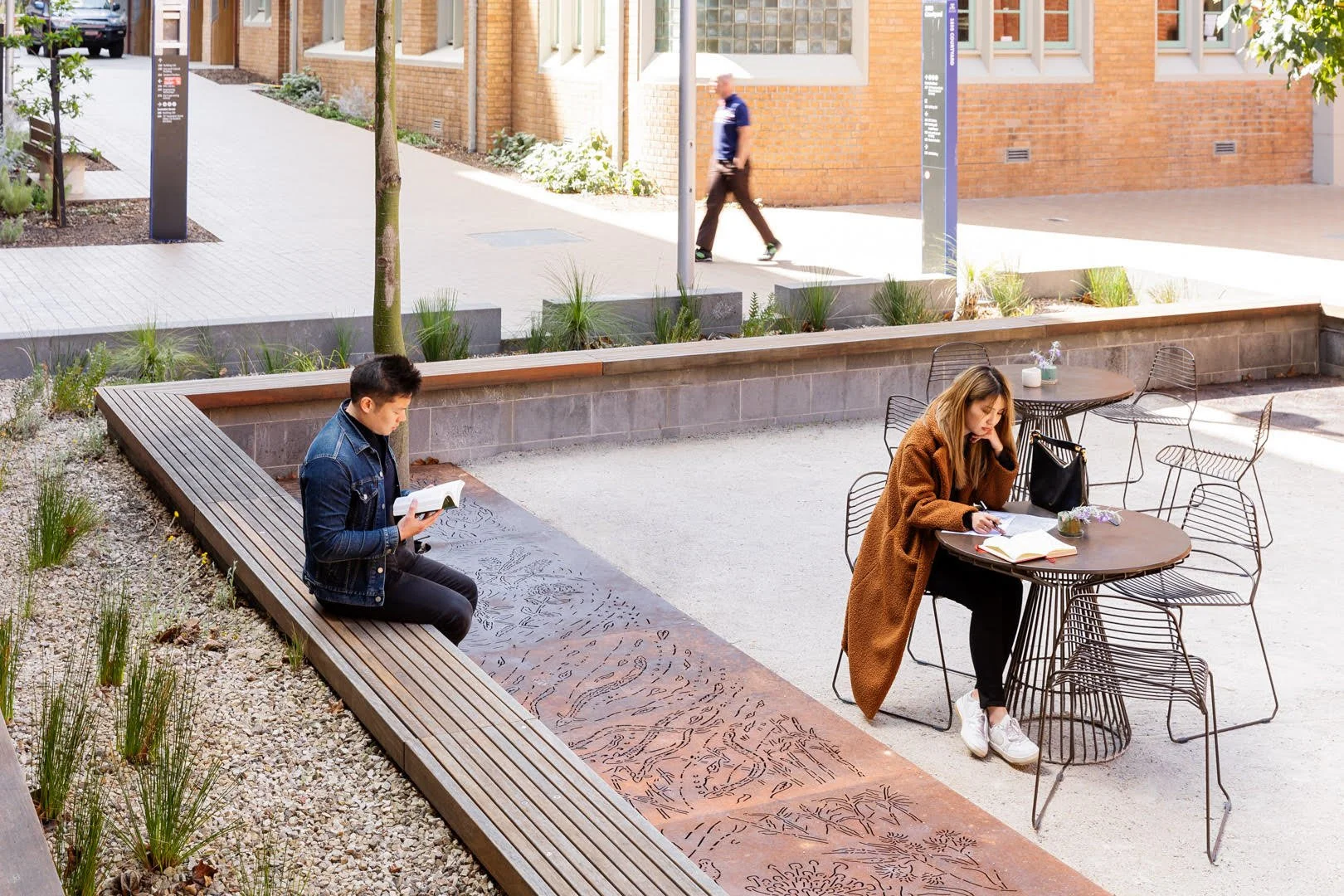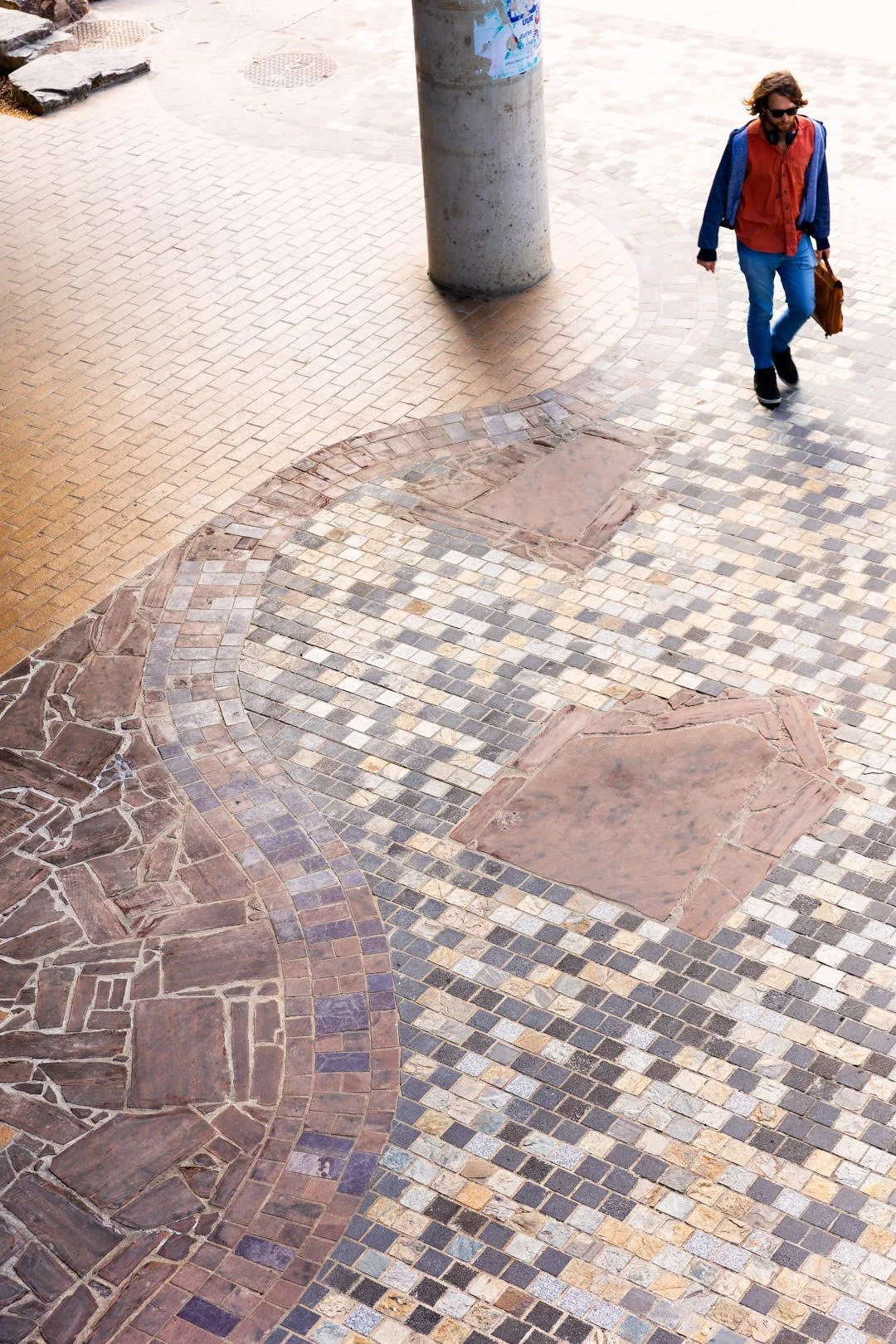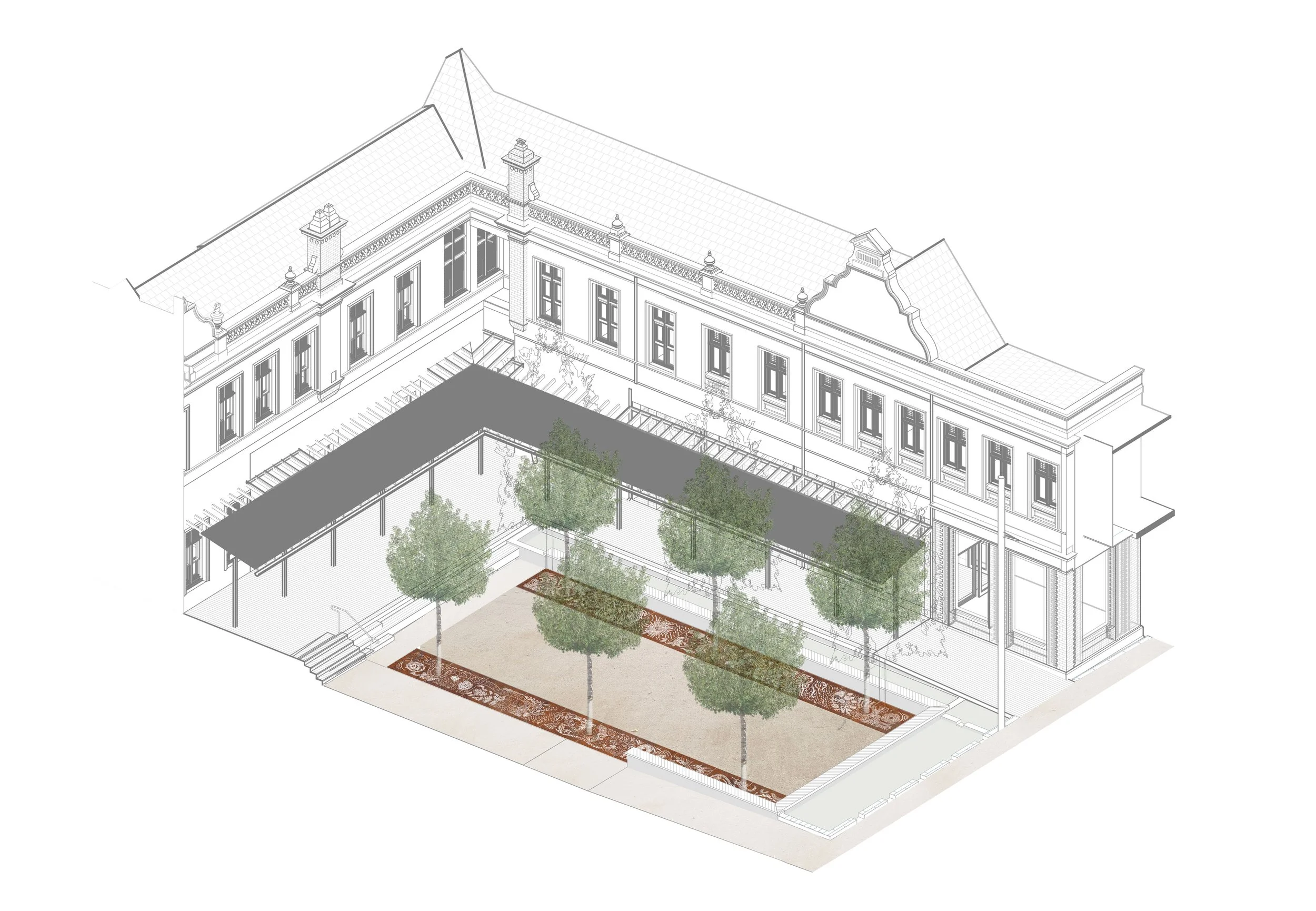University of Melbourne New Student Precinct
GLAS Landscape Architects was engaged to provide landscape design expertise for the Warrnambool Learning and Library Centre in 2019, working as a sub-consultant to Kosloff Architecture. The scope of the project focuses on the external spaces surrounding the hub, with a design aimed at integrating the new facilities into the existing TAFE campus and connecting them to the surrounding town, all while reflecting the local coastal environment and historical conAt the heart of the landscape concept is a desire to create spaces that not only function well but also connect people to nature and each other. The design takes cues from the coastal landscape, with its sand dunes, rock outcrops, and indigenous plant life, to inform everything from the material choices to the arrangement of planting and seating. The iconic Norfolk Island Pines that frame the entrance stand as sentinels, welcoming visitors into a civic plaza where the boundary between hard surfaces and soft greenery is intentionally blurred, encouraging exploration and casual interaction.
GLAS was an integral part of the design consortium led by Lyons for the new social and student services hub at the University of Melbourne's Parkville campus. Collaborating closely with Aspect Studios, GLAS helped shape the conceptual landscape design, blending our expertise to craft a cohesive and engaging narrative. The project adopted a co-creative process, informed by input from over 20,000 students and staff, which was key in developing a student-focused design. Additionally, Greenshoots Consulting led a comprehensive Indigenous engagement, consulting 130 stakeholders from 45 First Nations language groups, resulting in a design that authentically embraced First Nations voices and achieved 'Reconciliation at Scale.'
Key design elements that emerged from this collaborative process include the 'Welcome Terrain' paving and the tree grate artwork. Student feedback played a crucial role in shaping a dynamic social space that prioritizes student experience, environmental sustainability, biodiversity, and activation. A central design move was the rediscovery of the site's natural landscape, which involved removing existing deck structures to expose the historic Bouverie Creek. The precinct now features a central amphitheater, entry gateway, lawn, and a new entry space from Grattan Street, all within a contemporary Indigenous landscape, alongside a social courtyard and laneways.
GLAS was responsible for the southern landscape spaces, including a new entry area, social courtyards, and laneways. The design focused on creating a distinctive, resilient landscape that welcomes students, embraces sustainable systems, and honors the site's history. This world-class precinct was recognized with numerous awards, including the 2024 AILA National Award in Civic Landscape, 2023 Victorian Architecture Medal and the 2023 Good Design Awards Gold for Architectural Design, highlighting its innovation and commitment to integrating natural systems and honoring cultural narratives.
Traditional Custodians
Wurundjeri Woi Wurrung
Location
Parkville, VIC
Scale
12,000 sqm
Year
2019-2023
Client
University of Melbourne
Team
Aspect Studios
Lyons
Eizenberg Architecture
NMBW Architecture Studio
Greenaway
Greenshoot
Architects EAT
Awards
2024 AILA National Award, Civic Landscape
2023 Australian Institute of Architects Victoria Awards – Victorian Architecture Medal
2023 Good Design Awards Australia Gold Winner for Architectural Design
2024 AILA Victoria Landscape Architecture Award - Civic Landscape
2023 Victorian Architecture Awards
2023 The Henry Bastow Award for Educational Architecture
2023 Heritage Architecture Award for Creative Adaptation
2023 The Joseph Reed Award for Urban Design
Featured
Architecutre, Au, University of Melbourne Student Precinct Project, by Rachel Hurst (2023)
Landscape Australia, The University of Melbourne Student Precinct, by Jocelyn Chiew (2024)
West Courtyard: Includes a central seating area flanked by rain gardens and tree grates
(Original Map of Hobson Bay and Yarra River leading to Melbourne, 1864)
Approximate route of Bouverie Creek based on 2018 contours
Parkville’s lost creek
The water narrative of the Student Precinct highlights the rediscovery of the lost Bouverie Creek, symbolizing a connection to Country and Indigenous knowledge. By bringing water to the surface and incorporating local materials like mudstone and Victorian stone, the design reflects the eel migration within the stormwater system, blending cultural storytelling with an integrated water strategy. This approach not only reveals Indigenous narratives but also reclaims the landscape as a vital public space, reconnecting the campus with its natural and historical context.
The artwork ‘Seasons and the Cycle of Nature’ depicts the six Wurundjeri seasons designed by Dr Ngardarb Francine Riches, a Bardi/Jawi and Karajarri woman from the West Kimberley Coast, and was developed by the artist in conversation with Uncle Norman Terrick, a Wurundjeri Elder. Digitised by GLAS, stencilled in Corten steel. Installation date March 2023.
1 – LATE SUMMER – late January to late March
FEATURING – KOOYANG (Eels) and Bushfires
Bushfire season, grass burning under the guidance of the elders to promote growth and to make it easier to find small animals, Wattle gum, Male eels had started to come earlier and later but this was the peak time for female short-finned eels to move downstream to the sea, dry streams, Banksia – Honeysuckle, Stringybark blossoms attracted the birds, mistletoe berries time.
2- EARLY SUMMER – mid November to late January
FEATURING – BALLAMBAR (Butterflies)
Wetland plants, tall grass time, birds feeding young, black wattle flowering, People gathered around billabongs, rivers and creeks to fish. Galaxias moved up from the sea. Eels started coming down river to the sea, fish traps were set, Kangaroos and Emus were caught, Speargrass, Common reed, Women were digging for roots, Flathead and flounder were speared in the bay, large gatherings of people.
3 – LATE SPRING – late August to mid-November
FEATURING –Tadpoles
Plenty of lilies, orchids and PETYAN wildflowers, Snakes and lizards, Joeys were out of their pouches, Kingfisher birds returned from the north, tadpoles.
5 – WINTER – June to late July
FEATURING – Chinnup (Cockatoos)
Freezing winds, rough seas, snow, echidna, birds nesting, people moved to find koalas, wombats and possums, People built bark huts (willam), fires to keep warm, Possum skin blankets.
4 – AUTUMN – late March to June
FEATURING – Brushtail and ringtail possum mating season
Sunrises, flocking birds, Eastern grey and wallabies, Feather tailed gliders, fungi, Eagle nesting, Gwangal Moronn (Honeybees)
6 – EARLY SPRING – late July to late August
FEATURING – Larnuek (nesting birds)
High rainfall, high rivers, Muyan – silver wattle (also known as Baraks wattle – He died in Aug 15 1903 in golden wattle full bloom), yellow box flowering, people came back from the highlands to the lowlands, ducks and other bird eggs.
